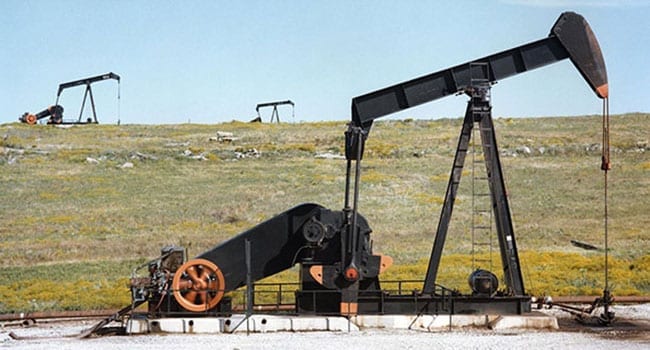Canada produced a record 24.4 million cubic metres (153.5 million barrels) of crude oil and equivalent products in December, up 2.2 per cent from the same month a year earlier, according to Statistics Canada.
“The gain was mainly attributable to higher output from Alberta oil sands and Newfoundland and Labrador offshore facilities which returned to regular operation following recent maintenance work,” said the federal agency on Wednesday.
“Oil sands extraction, which includes crude bitumen and synthetic crude oil, rose 1.8 per cent year over year to 15.5 million cubic metres. Over the same period, extraction of heavy, light and medium crude oil increased 3.3% to 6.7 million cubic metres, mostly driven by higher production from Newfoundland and Labrador. Production of equivalent products (+1.2 per cent to 2.2 million cubic metres) was also up in December.
Following two consecutive monthly decreases, Alberta production of crude oil and equivalent products rose 1.8 per cent year over year to 19.7 million cubic metres in December. The increase was primarily attributable to higher production of crude bitumen, while synthetic crude oil production remained essentially unchanged from a year ago. The daily average production of crude oil and equivalent products was up 4.1 per cent from the previous month to 636.0 thousand cubic metres, the highest in 2019.”
Opening inventories of crude oil and equivalent products held in Canadian facilities totalled 18 million cubic metres in December. During the month, inventories decreased 1.3 per cent to close at 17.8 million cubic metres. Inventories held at fields and plants (-2.6 per cent) and transporters (-1.0 per cent) were the main contributors to the monthly decrease, while those held in refineries were also down, added StatsCan
“Following a decrease in November, exports of crude oil and equivalent products rebounded 6.0 per cent year over year in December to a record 19.7 million cubic metres. The increase was primarily due to higher exports by pipeline to the United States (+6.5 per cent to 16.6 million cubic metres), following disruptions to pipeline transportation in the previous month,” it said. “Exports to other countries were up in December, due to higher volumes from Newfoundland and Labrador. In contrast, exports to the United States by other means (rail, truck and marine) were down 4.1 per cent to 2.3 million cubic metres, the first year-over-year decrease since February 2019.
“Imports of crude oil and equivalent products were up 4.8 per cent to 3.6 million cubic metres in December, the fifth consecutive monthly year-over-year increase.”
The federal agency said Canadian production of crude oil and equivalent products totalled 272.0 million cubic metres in 2019, up 2.0 per cent from the previous year. This followed a nine per cent increase in 2018.
“The slower growth rate in 2019 was primarily attributable to the production limits imposed by the Alberta government in January 2019. The production of crude bitumen was most affected, down 1.0 per cent in 2019 compared with an increase of 12.7 per cent in 2018,” said Statistics Canada.
“Meanwhile, other types of crude oil production were up in 2019, including synthetic crude oil (+5.2 per cent), light and medium crude oil (+3.5 per cent) and equivalent products (+6.5 per cent). Production of heavy crude oil decreased 0.3 per cent, the second consecutive annual decline.”

